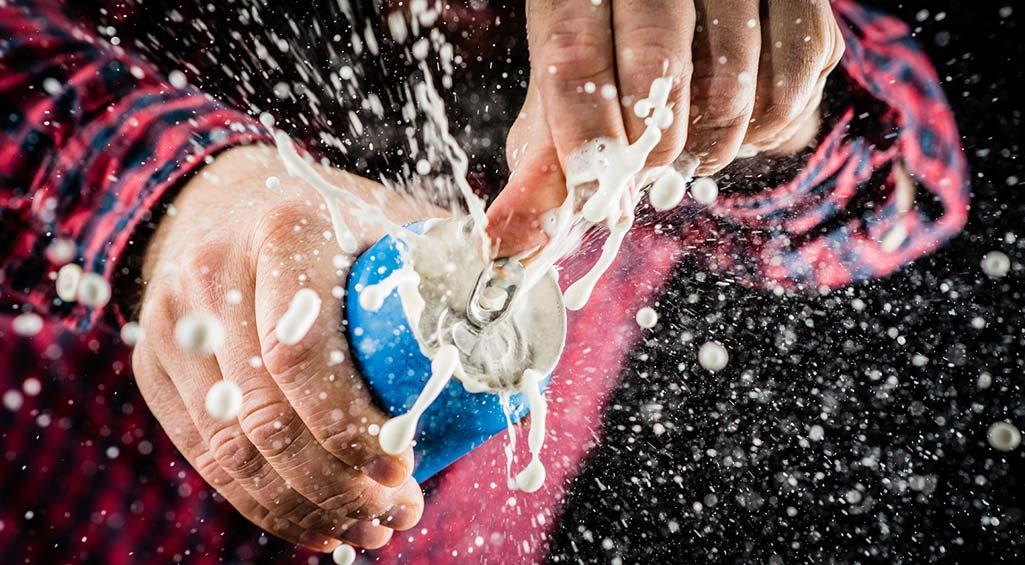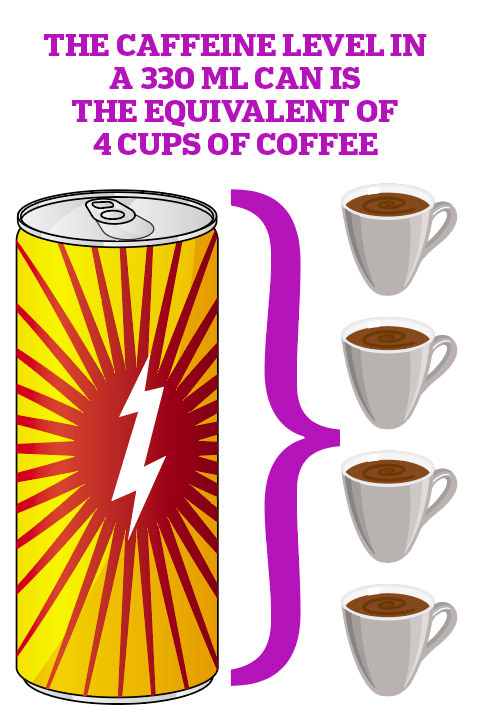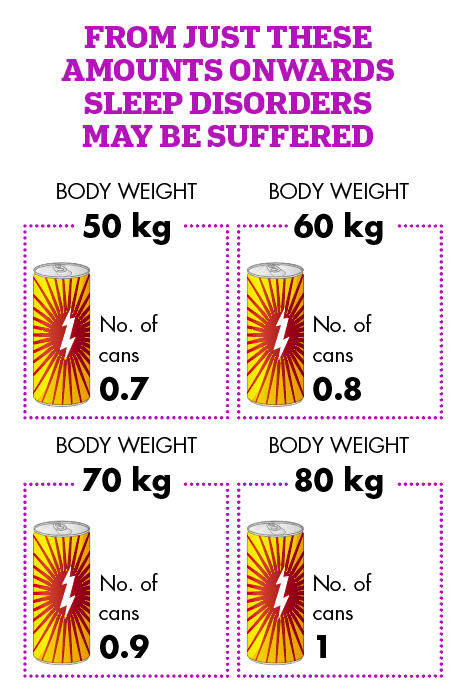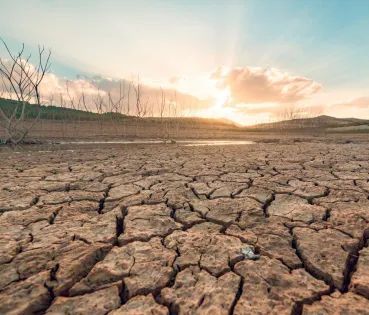
A dangerous increase in energy drink consumption
Many young people drink these beverages regularly without being aware of the dangers and mental problems that an excessive intake of caffeine and of some of the substances contained in these drinks that have become the latest trend can involve.
A group of young teenagers walking along the road or chatting peacefully in a park, some of them even children often have energy drinks in their hands. This image is becoming increasingly normal and very easy to see if you just look up and observe your surroundings. Today, energy drinks are one of the most popular refreshments amongst young people and teenagers. According to a European survey by Beneo carried out amongst 5,000 consumers, 8 out of every 10 young Europeans look for products that stimulate their energy. In Spain, based on the latest data from ESTUDES (from the National Drugs Plan), 4 out of every 10 students between the ages of 14 and 18 years have tried them and 16% admit having mixed alcohol with energy drinks during the last 30 days. They are more popular amongst boys (49.7%) than girls (31.1%). Away from the party atmosphere, the consumption and popularity of these drinks is also growing in everyday life. “In my opinion, this is for two reasons. The first is due to the effects that are produced by drinking them and in second place, because it has become a social ritual, making a teenager into one of the group when sharing it with their peers. It is a highly attractive option, both visually and due to the content of caffeine, taurine, at times sugar and other stimulants,” explains Doctor Sara Mayero, a psychiatrist at the Hospital HLA Moncloa.
Currently, the definition of energy drinks is not specifically included in the legislation and it is included within the refreshment beverages segment. There is also no regulation on the permitted ingredients, their maximum concentrations or their possible combinations. In many of them, caffeine is the main ingredient, but in addition to a large amount of sugar, they also contain taurine, L-carnitine, D-glucuronate and lactone, vitamins and even plant-based ingredients such as ginseng, guarana and gingko, not recommendable for young people who are still growing. “Some of these drinks include guarana. This is a plant from Brazil that contains guaranine, which in the end is caffeine, at approximately double the concentration of that obtained from coffee beans, with which it strengthens the effect of the caffeine itself,” Mayero explains.
La OMS establece que el límite aconsejabThe WHO stipulates that the advisable daily limit for caffeine must be 400 mg per day. In the case of these drinks, the cans contain 32 mg of caffeine per 100 millilitres, which in a standard volume of 320 millilitres mean 102.4 mg of caffeine, clearly above the amount advised as positive in 500 millilitre cans, as it means ingesting 160 mg of caffeine in one go.
Caffeine is a stimulant that affects the nervous system and although some studies defend its “neuro-protecting and even beneficial capacity on a cognitive level and when enhancing the effects of physical exercise,” as Mayero points out, other studies determine how caffeine could affect the developing brain. And more so when we are talking about young people drinking these beverages. “In the case of abuse, these substances are particularly harmful for children and teenagers, as their brains are continuing to evolve and therefore, are more sensitive to any secondary damage to them and due to the risk of the consumption, mainly with alcohol, which would make the repercussions more serious. Caffeine abuse has shown damaging effects in young people at different levels. It can cause cardiovascular damage, such as tachycardia, arrhythmia or loss of consciousness. Regarding mood swings, cases of mania or irritability have also been described,” the doctor warns.
Mental disorders
Excessive daily consumption of these drinks, mixed with alcohol and with drugs such as cocaine and other stimulants, precedes future mental illness and behaviour disorders. “It is obvious that their abuse can cause psychiatric symptoms, which in vulnerable people can unleash a mental illness. Disorders associated to the abuse of these drinks have been described, such as the relapse into psychotic symptoms in patients with prior schizophrenia and even psychotic episodes in patients with no history of this. They have also been related to anxiety disorders, emotional imbalances associated to bipolar disorder and ideas of suicide, even in patients without any history of this type,” the psychiatrist from the Hospital HLA Moncloa points out.
Backed by significant marketing campaigns, which only emphasise the energy gain and the improvement in alertness, many nutritionists (due to the excessive sugar content of the drinks), and psychiatrists (owing to different mental disorders) are starting to see increasingly young patients in their clinics. From typical sleep problems, learning difficulties and low performance, to cases of insomnia, nausea, vomiting, nervousness, very bad headaches… An endless amount of side effects that never appear in the notes and explanations making these energy drinks increasingly questioned.






